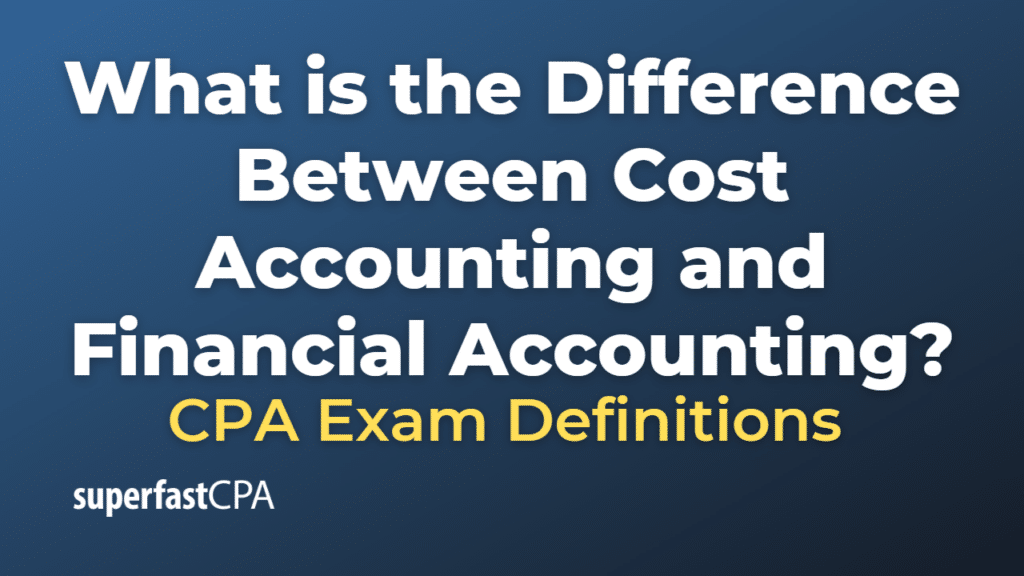Difference Between Cost Accounting and Financial Accounting
Cost Accounting and Financial Accounting are two branches of accounting that serve different purposes and have different audiences:
- Cost Accounting: Cost accounting is the process of recording, classifying, analyzing, and allocating costs associated with a process, and then determining the total cost of that process. It’s primarily used internally by management to inform decision making, optimize business practices, and manage budgets. It helps companies understand the cost of their products or services in order to determine pricing, identify inefficiencies, control costs, and improve profitability. Cost accounting focuses on individual projects, departments, or production processes within a company.
- Financial Accounting: Financial Accounting is focused on the financial transactions of a company over a specific period of time. Its purpose is to provide an accurate picture of the financial health and performance of a company to external stakeholders, including investors, creditors, and regulatory agencies. Financial accounting is governed by a set of rules known as accounting standards (such as GAAP or IFRS), and it results in the production of financial statements such as the income statement, balance sheet, and cash flow statement.
In summary, cost accounting is internally focused and is used for managerial decision making, while financial accounting is externally focused and provides a broad view of the company’s financial health for outsiders. Both are important for the effective management and assessment of a company’s financial situation.
Example of the Difference Between Cost Accounting and Financial Accounting
Let’s use a fictional manufacturing company, “AutoBuild Ltd.”, which produces cars, as an example to demonstrate the difference between cost accounting and financial accounting.
Cost Accounting:
Suppose AutoBuild is evaluating the cost of producing a specific model of car. The cost accounting team would analyze all associated costs, including direct materials (like metal and glass), direct labor (the wages of workers assembling the car), and manufacturing overhead (like factory utilities and equipment depreciation).
The cost accounting information allows the company’s management to understand how much it costs to produce each car. This information can help determine the selling price of the car, set budgets, identify inefficiencies in the production process, and make decisions about scaling production up or down.
Financial Accounting:
On the other hand, the financial accounting team at AutoBuild is concerned with recording all the financial transactions of the company, including revenue from car sales, expenses like wages and rent, and investment income or expense. They follow established accounting standards to create financial statements like the income statement, balance sheet, and cash flow statement.
These financial statements provide a broad overview of AutoBuild’s financial health and performance. They are used by external stakeholders, such as investors, creditors, and regulatory bodies, to understand the company’s profitability, liquidity, and financial stability.
In this example, cost accounting helps AutoBuild’s management make informed internal decisions, while financial accounting provides information for external stakeholders to evaluate the company’s overall financial position and performance.













